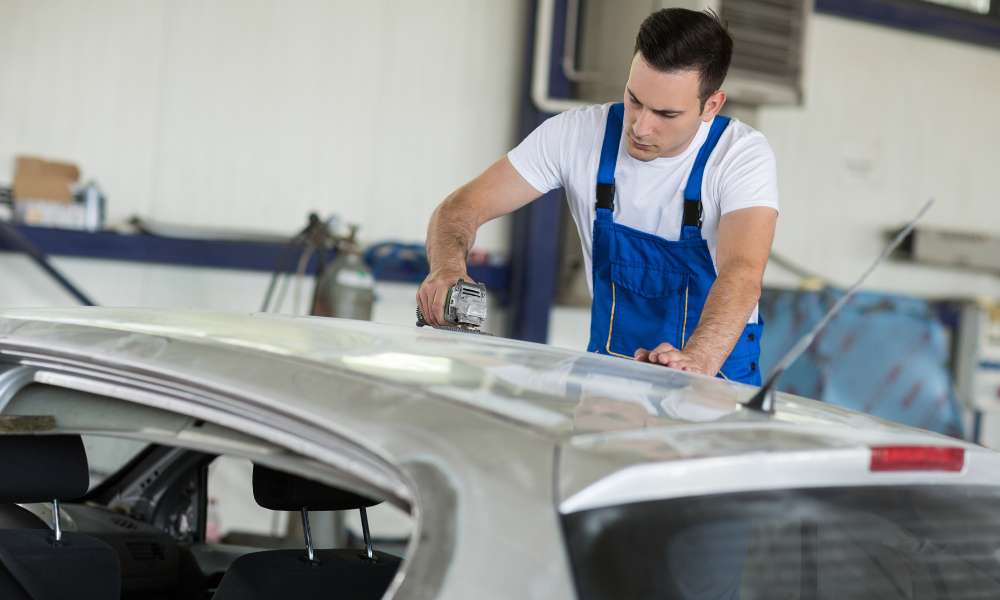When it comes to the health of your vehicle, the suspension system plays a pivotal role, not just in ensuring a smooth ride, but also in maintaining control and safety on the road. However, like any other part of your vehicle, the suspension is prone to wear and tear, and yes, damage. But the pressing question for many car owners is: Can suspension damage be fixed? At Cyclone Collision Center, we see various cases of suspension damage, and our answer is a resounding yes—with the right expertise, equipment, and approach, suspension damage is not only repairable but can be restored to its original condition.
Understanding Suspension Damage
Before diving into repair solutions, it’s important to understand what the suspension system is and what it does. Essentially, the suspension system includes springs, shock absorbers (or struts), linkages, and joints that connect a vehicle to its wheels and allow relative motion between the two. The system’s primary job is to provide steering stability, handle road irregularities, and support the vehicle’s weight.
Damage to the suspension can occur due to various reasons, including:
- Potholes and rough road conditions: These are the archenemies of your car’s undercarriage, causing immediate impact damage to the suspension system.
- Accidents: Even a minor fender bender can misalign your suspension, affecting the car’s handling.
- Wear and tear: Over time, components like bushings, ball joints, and shocks wear out and can fail, affecting the suspension’s functionality.
Signs of Suspension Damage
Detecting suspension damage early can save you from future costly repairs and maintain your car’s safety. Look out for the following signs:
- Uneven tire wear: This can indicate misalignment issues, often stemming from suspension problems.
- Poor handling or increased steering effort: If your car drifts or pulls during turns, or if the steering becomes less responsive, the suspension could be to blame.
- Unusual noises: Sounds like clunks or grinding noises during steering are red flags.
- Visible damage or unevenness in the car’s stance: If one corner of the car is lower than the others, it’s a strong indicator of a damaged spring.
Fixing Suspension Damage
Repairing suspension damage is a task for professionals. At Cyclone Collision Center, our approach involves several steps:
- Diagnosis: The first step in fixing any suspension problem is a thorough diagnostic check to assess the damage extent. This often involves a visual inspection and a computerized testing system to understand alignment and component condition.
- Replacing or repairing parts: Depending on the damage, some parts may need to be replaced, such as shocks, springs, or bushings. In some cases, components can be repaired or reconditioned.
- Alignment: After any necessary repairs or replacements are made, a wheel alignment is crucial to ensure that the car drives straight and handles properly.
- Testing: Post-repair testing is essential to ensure everything works as expected and the vehicle is safe to drive.
The Importance of Professional Help
While some automotive enthusiasts might consider DIY repairs, suspension systems require precise adjustments and specialized tools for proper repair and alignment. Professional service ensures that every part of the system works harmoniously with the others, maintaining the vehicle’s safety, efficiency, and longevity.
Conclusion
So, can suspension damage be fixed? Absolutely. With professional help from facilities like Cyclone Collision Center, your vehicle’s suspension can be restored to its optimal state. Remember, the key to extending the life of your suspension—and by extension, your vehicle—is regular maintenance and prompt attention to any signs of trouble. Don’t wait until you’re faced with a significant failure. Regular checks and balances by professionals can keep you riding smoothly and safely for the long haul. For expert suspension repair and advice, trust the team at Cyclone Collision Center, where we bring craftsmanship and precision to every job, ensuring your ride is in top shape every time you hit the road.
